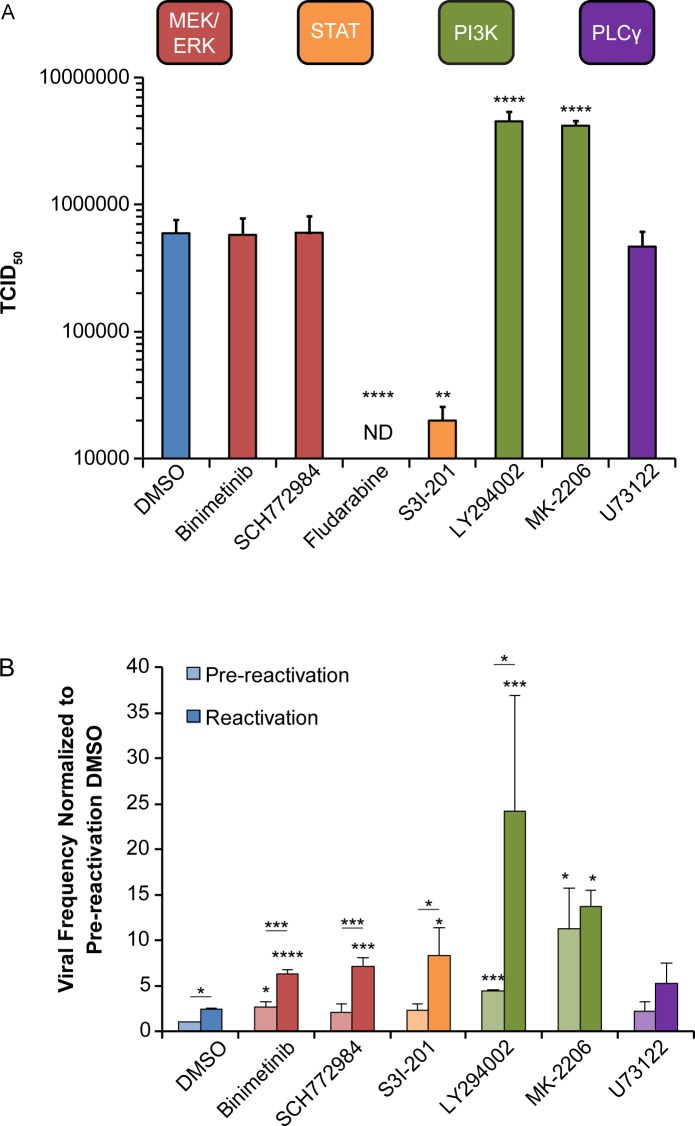Fig 3. Inhibition of MEK/ERK and PI3K/AKT signaling stimulates reactivation in CD34+ HPCs, but only inhibition of PI3K/AKT stimulates replication in fibroblasts.
(A) Fibroblasts were infected with TB40/EGFP virus (MOI = 1). At 24 hpi, cells were treated with DMSO (vehicle control), MEK/ERK (Binimetinib 1 μM; SCH772984 125nM), STAT (Fludarabine 50 μM; S3I-201 100 μM), PI3K/AKT (LY294002 20 μM; MK-2206 1.25 μM), or PLCγ (U73122 4 μM) inhibitors. At 8 dpi media and cells were collected and viral titers were determined by TCID50. (B) CD34+ HPCs were infected with TB40/EGFP virus (MOI = 2). At 24 hpi, CD34+/GFP+ cells were sorted and put into long-term culture with inhibitors listed above. After 10 days, parallel populations of either mechanically lysed cells or whole cells were plated onto fibroblasts monolayers in cytokine-rich media and frequency of infectious centers was determined by limited dilution analysis. The mechanically lysed population defines the quantity of virus present prior to reactivation (pre-reactivation). The whole cell population undergoes differentiation due to fibroblasts contact and cytokine stimulation, which promotes viral reactivation (reactivation). The frequency was normalized to the pre-reactivation DMSO control to facilitate comparisons between experiments. Statistical significance was calculated by either One-Way ANOVA with Bonferroni(A) or Two-Way ANOVA with Tukey’s correction for each condition (B) and represented by asterisks (* p-value < 0.05, ** p-value < 0.01, *** p-value < 0.001, and **** p-value < 0.0001). For fludarabine infected fibroblasts ANOVA could not measure difference due to absence of quantifiable virus and statistical significance was calculated by student t-test (**** p-value < 0.0001). Data graphed is the mean of 3 replicates with error bars representing SEM.

